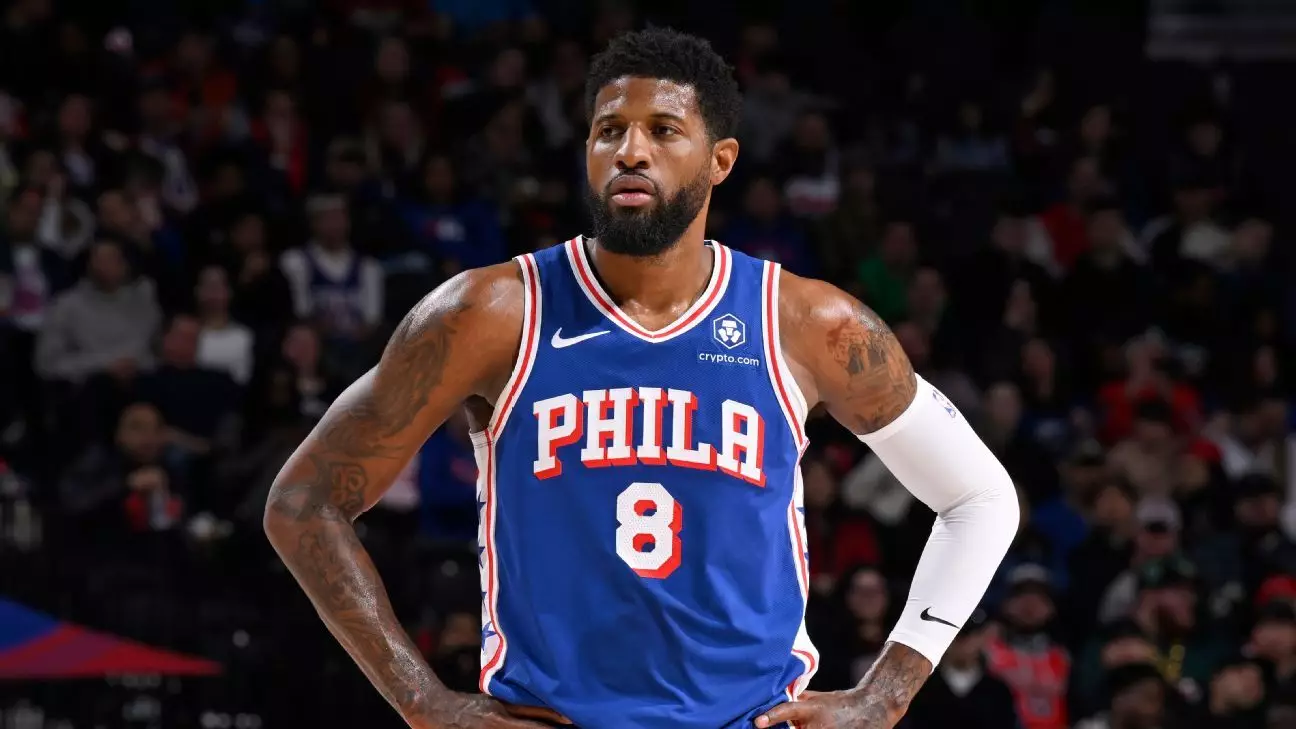The Philadelphia 76ers, a team once thought to be in line for a championship run this season, find themselves grappling with unforeseen challenges. At the center of this turmoil is forward Paul George, who has just been declared out for the remainder of the regular season. The decision comes after George received injections to treat ongoing issues with his left adductor muscle and knee—a culmination of persistent injuries that have plagued him throughout the season and into his career.
Despite being a key player, George has had to navigate a minefield of ailments this season. He has battled through groin, knee, and even finger injuries, which led to him relying on painkiller injections in an attempt to prolong his play. This decision to push through injuries raises critical questions about athlete health and the pressures that professional players face to perform. Such circumstances not only affect the player’s long-term health but also reshape the dynamics of the team.
Frustration Amid High Expectations
The disappointment is palpable among 76ers fans and the organization alike. George’s absence for the remainder of the season not only means they lose an impactful player but also highlights the fragility of their roster. The 76ers sit five games behind the play-in spot in the Eastern Conference, signaling a potential shift from championship aspirations to a more disheartening reality of the lottery.
George’s injuries showcase the unpredictable nature of professional sports. After signing a lucrative four-year $212 million deal with the 76ers, expectations were sky-high. He was anticipated to deliver an average of 16.2 points, 5.3 rebounds, and 4.3 assists per game—stats that, while respectable, hardly justify a max contract, especially with his inability to consistently stay on the court. The pattern of injuries continued to echo the sentiment that this season may be little more than a tumultuous footnote in George’s storied career.
Turning Inward: A Shift in Focus
In a candid acknowledgment of his struggles, George took the significant step of announcing his temporary departure from his podcast, “Podcast P with Paul George.” By stepping away from the platform, he indicated a commitment to focusing entirely on his health and the team’s performance. This decision speaks volumes about the pressures athletes face. Not only are they tasked with competing at high levels, but they are also under constant scrutiny, both from fans and media alike.
“I haven’t been the healthiest,” George remarked. “So it’s just been putting a ton of work towards getting my body as healthy as possible.” His words resonate deeply with anyone who’s ever fought through injury—balancing the drive to succeed with the need for personal well-being.
Impact on the 76ers’ Future
With two significant injuries hitting the roster in quick succession—George and MVP candidate Joel Embiid—Philadelphia’s season looks increasingly bleak. The shadow of missed expectations looms large as the team reorients its strategy, contemplating its future landscape. Despite a disappointing season, there’s a silver lining to be found amidst the chaos; the 76ers’ top-six protected first-round draft pick remains intact, potentially allowing them to land a high-caliber talent in the draft.
Yet, the reality of navigating through adversity will demand significant recalibrations from the 76ers’ management. This scenario forces a reevaluation of their players’ health and long-term viability. While the path forward may look dark, a robust offseason could shift their fortunes if they play their cards right in rebuilding and re-strategizing around their core players.
Paul George’s injury saga reflects the broader challenges the Philadelphia 76ers face this season. The pressures of performance, health, and expectations lurk in every corner of professional sports, ultimately questioning the very fabric of athletic achievement and resilience. The inevitable shifts in strategy, roster composition, and team dynamics will be paramount for the 76ers as they look to navigate the choppy waters ahead.


Leave a Reply